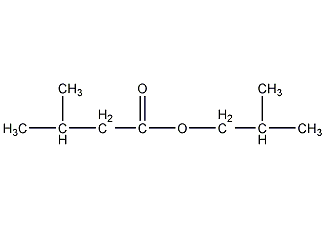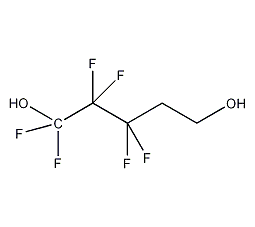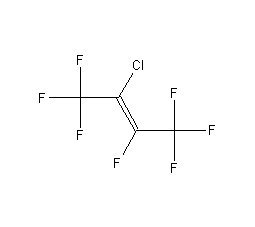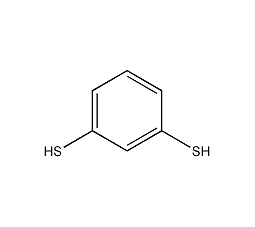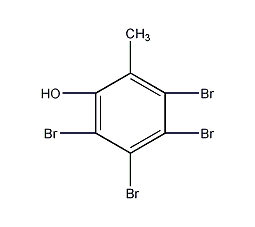

Structural formula
| Business number |
05M2 |
| Molecular formula |
C7H16O |
| Molecular weight |
116.20 |
| label |
Methyl amyl carbinol,
2-heptyl alcohol,
2-Hydroxyheptane,
Methyl pentyl carbinol,
2-Heptyl alcohol,
2-Hydroxyheptane,
sec-Heptylalcohol,
co-solvent,
plasticizer,
synthetic fragrances,
Aliphatic alcohols, ethers and their derivatives
|
Numbering system
CAS number:543-49-7
MDL number:MFCD00004587
EINECS number:208-844-3
RTECS number:MJ2975000
BRN number:1719088
PubChem ID:None
Physical property data
1. Properties: Colorless, viscous liquid with an unpleasant special odor.
2. Relative density (g/mL, 20/4ºC): 0.818
3. Boiling point (ºC, 101.3kPa): 158~161
4 . Refractive index (n20ºC): 1.4242
5. Flash point (ºC, opening): 59
6. Viscosity (mPa·s, 20ºC): 6.53
7. Vapor pressure (kPa, 20ºC): 0.13
8. Solubility (%, water, 20ºC): 0.35
9. Volume expansion coefficient (K– 1): 0.00094
10. Solubility: Miscible with alcohol, ether and benzene. It can dissolve animal and vegetable oils, mineral oils, fats, waxes, dyes, rubber, natural and synthetic resins, etc., and is slightly soluble in water.
11. Melting point (ºC): -34.0
12. Boiling point (ºC): 158~161
13. Relative density (25℃, 4℃ ): 0.8187
14. Refractive index at room temperature (n25): 1.4223
15. Critical temperature (ºC): 335.15
16. Critical pressure (MPa): 3.021
17. Critical density (g·cm-3): 0.263
18. Critical volume (cm 3·mol-1): 442
19. Critical compression factor: 0.264
20. Eccentricity factor: 0.763
21. Liquid phase standard hot melt (J·mol-1·K-1): 292.4
Toxicological data
Acute toxicity: Rat oral LD50: 2580mg/kg, no detailed description except lethal dose;
Rabbit dermal LD50: 1780 uL/kg, no detailed description except lethal dose;
Ecological data
This substance may be harmful to the environment, and special attention should be paid to water bodies.
Molecular structure data
1. Molar refractive index: 35.97
2. Molar volume (cm3/mol): 141.9
3. Isotonic specific volume (90.2K ): 324.7
4. Surface tension (dyne/cm): 27.3
5. Polarizability (10-24cm3): 14.26
Compute chemical data
1. Reference value for hydrophobic parameter calculation (XlogP): None
2. Number of hydrogen bond donors: 1
3. Number of hydrogen bond acceptors: 1
4. Number of rotatable chemical bonds: 4
5. Number of tautomers: none
6. Topological molecule polar surface area 20.2
7. Number of heavy atoms: 8
8. Surface charge: 0
9. Complexity: 43.7
10. Number of isotope atoms: 0
11. Determine the number of atomic stereocenters: 0
12. Uncertain number of atomic stereocenters: 1
13. Determine the number of chemical bond stereocenters: 0
14. Number of uncertain chemical bond stereocenters: 0
15. Number of covalent bond units: 1
Properties and stability
1. Colorless liquid. There are three flammable isomers: dl-, d-, and l-. There is a danger of burning when exposed to open flames, high heat, or oxidants. It is non-corrosive to metals and has the chemical reactivity of secondary alcohols.
2.The toxicity is close to that of hexanol (rat oral LD504.9g/kg).
3. Found in tobacco leaves.
Storage method
Stored in a cool, dry and well-ventilated warehouse. Keep away from fire and heat sources. Protect from direct sunlight. The packaging is sealed. They should be stored separately from acids and food chemicals, and avoid mixed storage. Suitable materials should be available in the storage area to contain spills. Can be stored in iron, mild steel, copper or aluminum containers.
25mg glass bottle, protected by wooden box. Store in a cool, dry and ventilated warehouse. Keep away from fire and heat sources. Store separately from oxidizing agents. Keep sealed.
Synthesis method
1. Prepared by the reaction of amyl nickel bromide and acetaldehyde.

2. Methyl-pentyl It is prepared by reacting methanone with metallic sodium in ethanol solution.

3. Preparation method:
p>

Equipped with stirrer, thermometer, reflux In the reaction bottle of the condenser, add 114g (1.0mol) of 2-heptanone (2), 300mL (95%) of industrial alcohol and 100mL of water. Slowly add 65g (2.8 mol) of metallic sodium (sodium wire or small pieces of sodium). The adding speed controls the temperature of the reaction solution to not exceed 30°C. If necessary, use ice water to cool the reaction bottle. When all the metallic sodium has reacted, add 1L of water and cool to 15°C. Separate the upper layer, wash with 25mL of dilute hydrochloric acid (1:1), then 25mL of water, and dry with anhydrous sodium sulfate or anhydrous potassium carbonate. , fractionated, and collected the fractions at 156-158°C to obtain 75g of 2-heptanol (1), with a yield of 65%. [1]
Purpose
Added to nitro spray paint solvents as cosolvents, used as plasticizers, wetting agents, intermediates for medicines, spices, etc., and analytical chemical reagents. Add it to the solvent of nitrocellulose spray paint as a co-solvent to increase the solubility. It is also used as raw material for manufacturing plasticizers, wetting agents, medicines, spices, etc.
Resource:allhdi.com
